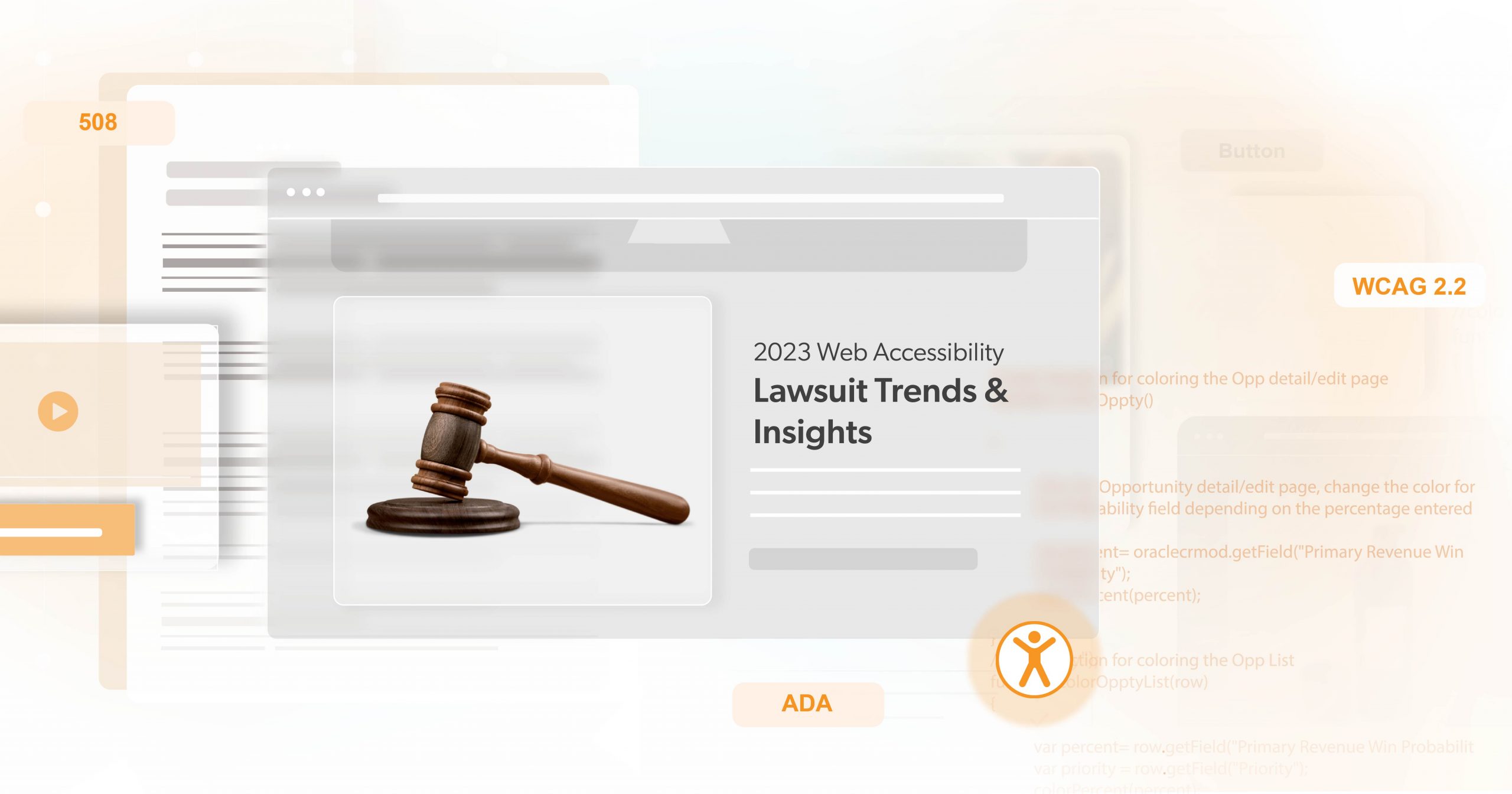If you’re a business owner with a website, you’ve probably heard about web accessibility lawsuits. These are legal cases where people or organizations sue companies for not making their websites accessible to everyone, including those with disabilities. In recent years, these lawsuits have been quite common, but there’s a noticeable trend so far in 2024: federal web accessibility lawsuits are on the decline.
This drop is something worth paying attention to if you manage a website. So, why exactly are there fewer of these cases, and what does this mean for you? Let’s dive into the details.
Overview of the Decrease in Federal Web Accessibility Lawsuits
Between 2023 and 2024, federal web accessibility lawsuits have significantly decreased, according to Useablenet’s 2024 Midyear Report. In fact, we anticipate a 600-case drop from last year. This change is noteworthy for anyone keeping an eye on digital accessibility and legal trends. Understanding why this decrease is happening can help you better manage your website and avoid potential legal trouble.
Increased Judicial Scrutiny Influences the Shift
One major reason for the drop in federal web accessibility lawsuits is increased scrutiny from the courts. Federal judges are now demanding more detailed and specific claims from plaintiffs. This means that simply alleging a website isn’t accessible isn’t enough. Plaintiffs must provide concrete evidence and detailed arguments to support their claims.
For example, if someone is suing a business because they believe the website isn’t accessible, they now need to show exactly how the website fails to meet accessibility standards and how it impacts them personally.
This shift means that many cases that might have been filed in the past are now getting dismissed or not even making it to court.
Judges Now Demand More Detailed Claims
The increase in judicial scrutiny is not just about being picky. It’s about ensuring that cases have a solid foundation before they proceed. Judges are looking for detailed claims that clearly outline how a website fails to comply with accessibility guidelines. They want to see specific examples and evidence showing how the lack of accessibility affects users.
This higher bar for evidence means that plaintiffs and their legal teams need to do more homework before taking a case to court. It’s not enough to say a website is inaccessible; they need to provide a thorough analysis and proof of their claims.
Recent Defense Victories Prompt Shifts to State Courts
Another factor contributing to the decrease in federal web accessibility lawsuits is recent victories by defense teams in federal ADA claims. Businesses that have successfully defended themselves against these lawsuits have shown that it’s possible to win these cases if you have a solid defense strategy.
As a result, some plaintiffs’ firms are shifting their focus from federal to state courts. State courts can have different rules and may offer a more favorable environment for plaintiffs, depending on the jurisdiction. This shift impacts the volume of federal filings, as more cases are being heard at the state level instead.
The Impact on Filing Volumes
With more cases moving to state courts and the increased difficulty of winning in federal court, the overall number of federal web accessibility lawsuits has decreased. Businesses that have been targeted in the past might find themselves facing fewer federal lawsuits, but this doesn’t mean they should let their guard down.
It’s important to note that while federal cases might be dropping, the need for web accessibility remains just as crucial. Whether the lawsuits are happening in federal or state courts, ensuring your website is accessible is key to avoiding legal issues and serving all potential customers.
Practical Steps to Improve Web Accessibility
If you’re concerned about web accessibility, here are some practical steps you can take:
- Audit Your Website: Conduct an accessibility audit to identify any issues. You can use tools like WAVE or Lighthouse to help with this.
- Follow Accessibility Best Practices: Familiarize yourself with the Web Content Accessibility Guidelines (WCAG) and make it a goal to achieve these standards.
- Update Regularly: Web accessibility isn’t a one-time fix. Regularly update your website to address any new issues that arise.
- Consult Professionals: If you’re unsure where to start, consider consulting with web accessibility experts like 216digital, who can provide guidance and support.
- Educate Your Team: Ensure that your team understands the importance of web accessibility and is trained to implement best practices.
Stay Compliant with 216digital
As the landscape of federal web accessibility lawsuits evolves, it’s clear that staying ahead of the curve is crucial. While the decrease in lawsuits in 2024 signals a shift, web accessibility remains a vital concern for all businesses. By staying informed and proactively enhancing your website, you not only protect your business but also ensure that your site is accessible to everyone.
At 216digital, we’re here to guide you every step of the way. No matter where you are on your accessibility journey, our ADA experts can help you develop a strategy to seamlessly integrate WCAG 2.1 compliance into your development roadmap. Ready to take the next step? Schedule a complimentary ADA strategy briefing with us today to discover how we can support you in achieving ongoing, real-world accessibility tailored to your needs.




